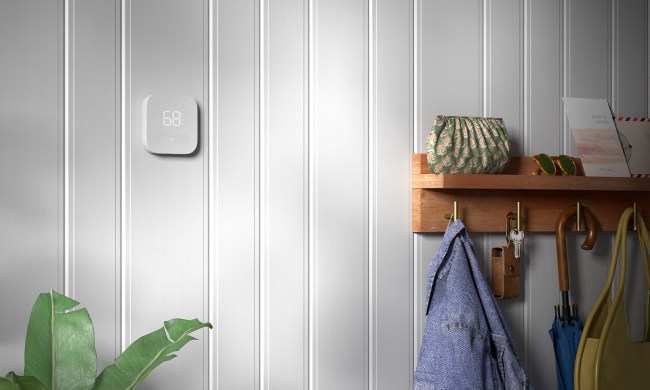
When it comes to smart locks, all models essentially fall into two categories. The first category will be familiar to most people, as these are traditional smart locks built to replace your existing deadbolt. That means you’ll get a whole new set of keys for your front door, as well as hardware that introduces smart features to your home.
The second kind of smart lock is a retrofit smart lock. These quirky devices are designed to fit over your existing hardware — allowing you to keep using your old keys while also adding smart features. Both types of smart locks are great ways to upgrade your front door, but which is best for your home? Here’s a closer look to help you decide if you should replace your traditional deadbolt with a smart lock or install a retrofit smart lock instead.
Consider your DIY skills

One of the biggest differences between a traditional smart lock and retrofit smart lock is the installation process. Most shoppers should be able to install both types of products, though retrofit smart locks are undoubtedly easier. This is because you don’t have to worry about getting a new deadbolt to align properly with your door, as you’ll just be using your existing hardware. Instead, all you really need to do is slip the new smart lock on top of the existing unit. With that done, so is your installation.
For traditional smart locks, you’re essentially installing a whole new deadbolt system. And depending on your product and the layout of your current hardware, this could require the use of power tools to realign plates or carve out areas of the doorframe for a better fit. Again, this is usually a fairly straightforward process, but it’s no doubt more in-depth than with retrofit smart locks.
Because of this, retrofit smart locks are better for folks concerned about their DIY skills, as they’re much easier to get up and running.
Check out all the models on the market

Retrofit and traditional smart locks come in all shapes and sizes. However, you’ll find that the majority of smart locks available today are of the “traditional” variety. This makes traditional locks the best option for discerning shoppers, as there’s a good chance you’ll be able to find something that checks all the boxes on your wish list.
The Yale Assure Lock 2, for example, is a traditional smart lock that can be modified in a variety of ways, enabling you to choose options such as keyed, key-free, Wi-Fi support, Bluetooth support, or fingerprint scanner support. Others, like the Lockly Vision, come with solar panels to passively charge the unit and are packed with unique safety features.
Retrofit smart locks are pretty sparse by comparison, offering limited functionality and fewer available models. Many don’t even come with a keypad, forcing you to access them with either a physical key or their mobile companion app. This means you’ll likely have to settle for a retrofit smart lock with fewer smart features or one that doesn’t perfectly fit your needs and wants.
Some retrofit locks are starting to buck this trend, as you can now pair the August Wi-Fi Smart Lock with the Yale Keypad — making it function more like a traditional smart lock.
Smart connectivity

Regardless of which smart lock you choose, there’s a good chance it’ll offer heaps of connectivity options. Most smart locks come with mobile companion apps, allowing you to customize their performance or access them remotely. Some models use Bluetooth or Wi-Fi, while others might offer support for Matter or Z-Wave for increased functionality. Thankfully, this sort of connectivity can be found on retrofit and traditional smart locks, so it shouldn’t play a big factor in your decision.
Both are great upgrades
Adding any smart lock to your front door is typically a wise investment. These gadgets make it easier than ever to give guests and family members access to your home while ensuring it stays safe from strangers.
Shoppers seeking a robust smart lock with heaps of features will likely find traditional smart locks to be a better option, while retrofit smart locks are better for folks seeking a quick install process. Retrofit smart locks might also be a good option for renters since they don’t require new deadbolts or keys. You’ll want to check with your landlord, but there’s a strong possibility they’ll be allowed by your lease agreement.



